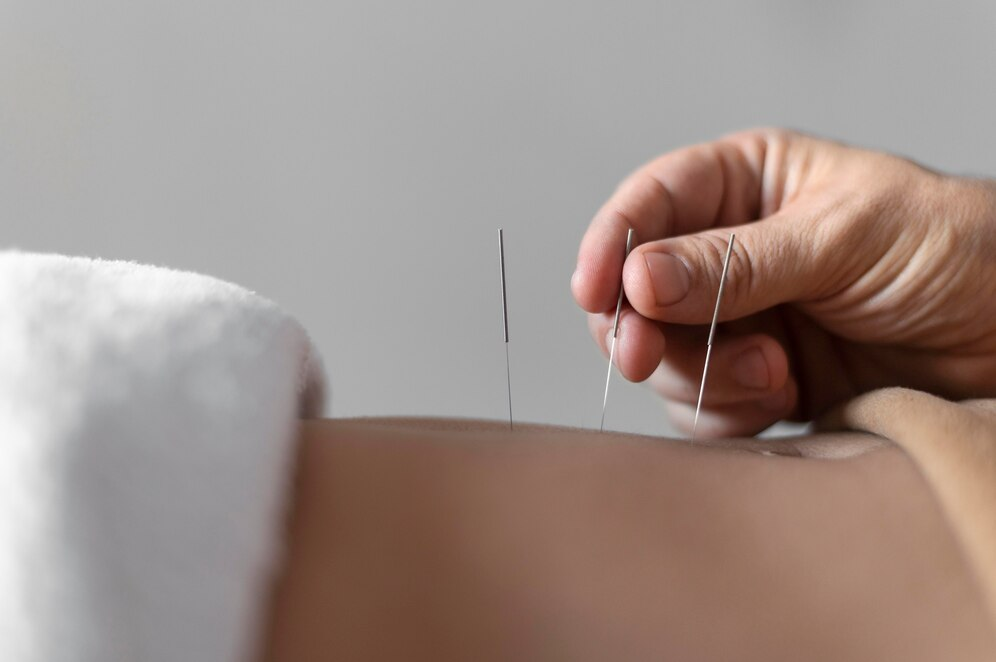Acupuncture, a time-honored practice originating from ancient China, continues to thrive as a trusted method for pain relief and holistic health. This guide delves into the principles of acupuncture, its effectiveness in managing pain, and practical advice for incorporating this ancient remedy into modern pain management routines.
1. Understanding Acupuncture:
1.1. Historical Background:
-
Origins: Acupuncture has been practiced for over 2,500 years, rooted in Traditional Chinese Medicine (TCM).
-
Philosophy: Based on the concept of Qi (vital energy) flowing through meridians (pathways) in the body.
1.2. Basic Principles:
-
Qi and Meridians: Acupuncture aims to balance the flow of Qi by stimulating specific points along the meridians.
-
Acupoints: Targeted areas on the body where needles are inserted to influence energy flow and alleviate pain.
2. How Acupuncture Works:
2.1. Needle Insertion:
-
Technique: Thin, sterile needles are inserted into specific acupoints on the body.
-
Sensations: Patients may experience tingling, warmth, or a mild ache, indicating the activation of Qi.
2.2. Mechanisms of Action:
-
Neurological Effects: Acupuncture stimulates nerves, leading to the release of endorphins and other neurotransmitters that reduce pain.
-
Blood Flow: Increases circulation to the affected areas, promoting healing and reducing inflammation.
-
Immune Response: Enhances the body's immune function, aiding in pain relief and recovery.
3. Benefits of Acupuncture for Pain Relief:
3.1. Chronic Pain Management:
-
Back Pain: Effective for alleviating lower back pain and improving mobility.
-
Arthritis: Reduces joint pain and stiffness, enhancing quality of life for arthritis sufferers.
3.2. Acute Pain Relief:
-
Injury Recovery: Speeds up recovery from sports injuries and other acute conditions.
-
Post-Surgical Pain: Helps manage pain and reduce reliance on pain medications after surgery.
3.3. Neuropathic Pain:
-
Fibromyalgia: Provides relief from widespread pain and improves sleep quality for fibromyalgia patients.
-
Sciatica: Alleviates sciatic nerve pain, reducing discomfort and improving function.
4. Acupuncture in Modern Pain Management:
4.1. Complementary Therapy:
-
Integration with Conventional Medicine: Acupuncture is often used alongside conventional treatments to enhance overall pain management.
-
Holistic Approach: Addresses not just physical pain but also emotional and mental well-being.
4.2. Personalized Treatment Plans:
-
Individualized Care: Acupuncture treatments are tailored to each patient's specific needs and conditions.
-
Regular Sessions: Consistency is key; regular acupuncture sessions yield better long-term results.
5. Practical Insights for Trying Acupuncture:
5.1. Finding a Qualified Practitioner:
-
Credentials: Ensure the acupuncturist is licensed and certified by a reputable acupuncture board.
-
Experience: Look for practitioners with experience in treating your specific pain condition.
5.2. Preparing for Your Session:
-
Wear Comfortable Clothing: Loose clothing allows easy access to acupoints.
-
Eat Lightly: Avoid heavy meals before your session to prevent discomfort.
5.3. What to Expect During and After Treatment:
-
Initial Consultation: The practitioner will assess your condition and develop a treatment plan.
-
Treatment Session: Sessions typically last between 30-60 minutes; relaxation is encouraged.
-
Post-Treatment Care: Drink plenty of water and rest if needed; mild soreness at needle sites is normal.
5.4. Evaluating Effectiveness:
-
Track Progress: Keep a journal of your pain levels and overall well-being after each session.
-
Open Communication: Discuss any concerns or lack of progress with your practitioner to adjust the treatment plan accordingly.
Conclusion:
Acupuncture stands as a testament to the enduring wisdom of ancient medicine, offering a natural and effective method for pain relief in modern times. By understanding the principles, benefits, and practical considerations of acupuncture, individuals can make informed decisions about incorporating this ancient remedy into their pain management strategies. Whether used alone or in conjunction with other treatments, acupuncture provides a holistic approach to alleviating pain and enhancing overall health.




